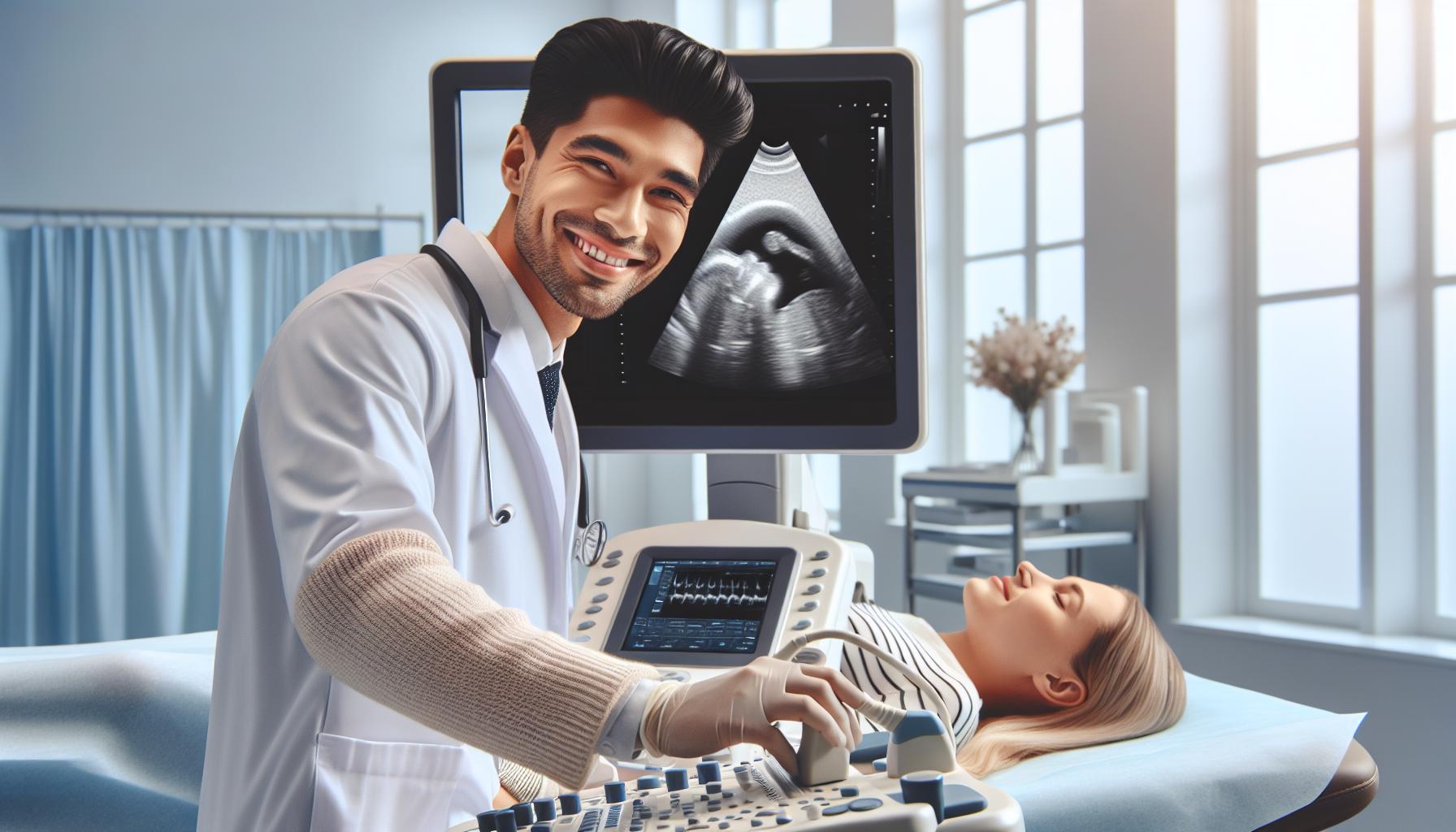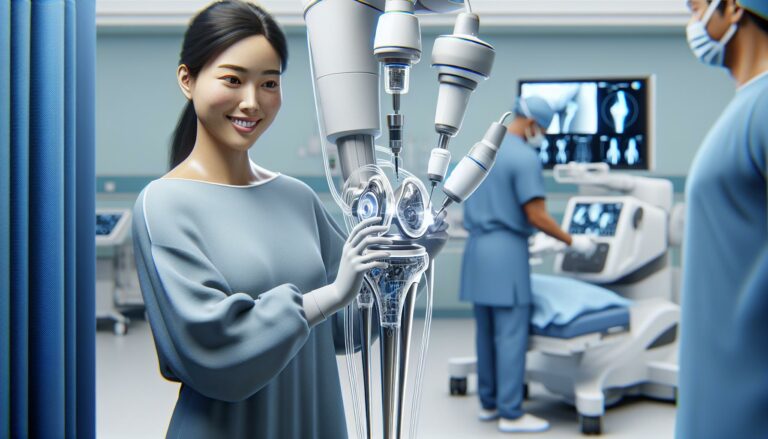Ultrasound technology has come a long way, and it’s revolutionizing how we approach medical imaging. I’m excited to explore the latest advancements that are making this non-invasive technique more accessible and effective than ever. From clearer images to real-time diagnostics, these innovations are changing the game for both patients and healthcare providers.
With new tools and techniques on the horizon, the future of ultrasound looks promising. I’m eager to share insights into how these developments are enhancing patient care, improving accuracy, and even expanding the applications of ultrasound beyond traditional uses. Join me as I dive into the world of cutting-edge ultrasound technology and its potential to transform healthcare as we know it.
Key Takeaways
- Advancements in Imaging Quality: New ultrasound technology offers enhanced image resolution and innovative 3D and 4D imaging techniques, leading to more accurate assessments of internal structures.
- Real-Time Diagnostics: The integration of real-time imaging capabilities allows healthcare providers to monitor conditions instantly, improving decision-making during procedures and enhancing patient outcomes.
- Increased Accessibility: Portable ultrasound devices have made this technology available in remote locations, allowing for crucial medical evaluations outside traditional hospital settings.
- Artificial Intelligence Integration: AI algorithms assist in image interpretation, improving accuracy and efficiency while reducing diagnostic errors in various medical fields.
- Diverse Medical Applications: New ultrasound technology is transforming fields like obstetrics and cardiology, enhancing prenatal care and enabling non-invasive assessments of heart conditions.
- Focus on Patient Safety: As a non-invasive imaging modality with minimal risks, ultrasound technology promotes patient safety and encourages wider use in healthcare settings.
Overview of New Ultrasound Technology
New ultrasound technology features several key advancements that enhance diagnostic capabilities. Enhanced image resolution significantly improves visualization of internal organs. Innovative 3D and 4D imaging techniques provide detailed and dynamic visual representations, facilitating better assessments.
Portable ultrasound devices are making the technology more accessible in various settings, including remote locations. These compact devices often connect to smartphones or tablets, offering real-time imaging capabilities without needing a traditional console.
Artificial intelligence integration enhances interpretation accuracy and efficiency. Algorithms assist healthcare professionals in recognizing patterns in ultrasound images, potentially reducing diagnostic errors.
Fusion imaging combines ultrasound with other imaging modalities, such as MRI or CT scans. This results in comprehensive views of anatomical structures, aiding in precise planning for surgical procedures.
Telehealth applications are expanding the reach of ultrasound technology. Remote consultations allow healthcare providers to evaluate patients using portable ultrasound while leveraging secure networks for data transmission.
These advancements in ultrasound technology directly contribute to improved patient care and outcomes, reflecting ongoing innovation in the medical imaging field.
Key Features of New Ultrasound Technology



New ultrasound technology showcases several groundbreaking features that significantly improve medical imaging. These innovations enhance diagnostics and expand the scope of ultrasound applications in clinical settings.
Enhanced Image Quality
Enhanced image quality stands as a pivotal feature of new ultrasound technology. Advanced sensors and sophisticated algorithms provide higher resolution images that reveal intricate details within tissues. This clarity aids in the accurate assessment of various conditions, from detecting tumors to evaluating blood flow. Furthermore, the use of 3D and 4D imaging techniques allows for detailed visualization of anatomies, improving understanding and facilitating better decision-making in patient care.
Real-Time Imaging Capabilities
Real-time imaging capabilities represent another major advancement. Innovative systems deliver instant feedback during procedures, allowing healthcare providers to assess conditions or monitor changes as they happen. This immediacy benefits both diagnostic and therapeutic applications, enabling prompt interventions when necessary. Portable devices with smartphone connectivity enhance accessibility, making real-time imaging possible in diverse locations, including emergency settings or remote areas.
Applications in Medicine


New ultrasound technology plays a crucial role in various medical fields, enhancing diagnostic capabilities and improving patient care.
Obstetrics and Gynecology
Ultrasound technology significantly impacts obstetrics and gynecology, providing detailed imaging of fetal development. Advanced imaging techniques offer 3D and 4D views, allowing for better visualization of anatomical structures and early detection of anomalies. These innovations lead to more informed decision-making regarding prenatal care. Additionally, real-time diagnostics during procedures such as follicle monitoring and ovarian assessments support timely interventions. Portable ultrasound devices enable expectant mothers in remote areas to receive quality care, further broadening the accessibility of critical services.
Cardiology
In cardiology, new ultrasound technology facilitates non-invasive assessments of heart conditions. Enhanced imaging quality supports accurate evaluations of cardiac structures, blood flow, and valve function. Real-time imaging is essential during procedures like echocardiograms, where immediate feedback aids clinicians in diagnosing ailments such as congestive heart failure or valvular disorders. The integration of artificial intelligence in ultrasound interpretation enhances accuracy and efficiency, reducing the risk of misdiagnosis. Portable devices allow for cardiac evaluations in various settings, ensuring that patients have access to vital cardiac care wherever they are.
Benefits of New Ultrasound Technology



New ultrasound technology offers numerous advantages that significantly enhance patient care and diagnostic accuracy. These benefits range from non-invasive procedures to increased patient safety.
Non-Invasive Procedures
Non-invasive procedures characterize new ultrasound technology. These procedures eliminate the need for surgical interventions while allowing precise diagnostic capabilities. In disciplines like obstetrics, patients receive safe monitoring of fetal development without exposing them to radiation. In cardiology, non-invasive assessments facilitate the evaluation of heart conditions, providing essential data for appropriate treatment decisions. Improved imaging techniques allow healthcare providers to identify abnormalities early, thus promoting timely management strategies.
Increased Patient Safety
Increased patient safety represents a crucial benefit of new ultrasound technology. Compared to traditional imaging modalities like CT scans, ultrasound poses minimal risks due to its non-ionizing nature. The real-time imaging capabilities allow healthcare providers to avoid unnecessary procedures, decreasing the likelihood of complications. Moreover, the advancement of portable ultrasound devices enables rapid assessments in emergency scenarios, enhancing patient outcomes. This focus on safety encourages broader acceptance and usage of ultrasound in varied medical contexts, ensuring patients receive quality care with reduced risk.
Challenges and Limitations
Despite advancements, new ultrasound technology faces several challenges and limitations that can impact its implementation and effectiveness. Understanding these factors helps refine the use of this innovative imaging modality.
Cost Factors
Cost remains a significant barrier to widespread adoption of new ultrasound technology. High-quality devices, especially portable ones with advanced features, often come with substantial price tags. Smaller healthcare facilities or practices may struggle to secure funding or justify the investment in such technology. Additionally, ongoing maintenance and software updates contribute to long-term expenses. As a result, the distribution of advanced ultrasound systems tends to favor larger institutions, potentially limiting access for underserved communities.
Training Requirements
Training requirements represent another challenge for effective utilization of new ultrasound technology. Healthcare professionals must undergo comprehensive training to operate advanced ultrasound systems and accurately interpret the high-resolution images produced. This training can demand considerable time and resources, which smaller practices or facilities may lack. Additionally, the rapid pace of technology updates can necessitate continuous learning, enhancing the burden on medical staff. Ensuring all practitioners are proficient with the latest tools is crucial to optimizing patient care and diagnostic accuracy.
Conclusion
The advancements in ultrasound technology are paving the way for a new era in medical imaging. With improved image quality and real-time diagnostics I’m excited about the potential for better patient outcomes. The accessibility of portable devices is a game changer allowing healthcare providers to perform assessments in various settings.
While challenges like cost and training remain I believe the benefits far outweigh them. As technology continues to evolve I’m looking forward to seeing how these innovations will enhance patient care and expand the role of ultrasound across different medical fields. The future of ultrasound is bright and it’s an exciting time to witness these changes unfold.


